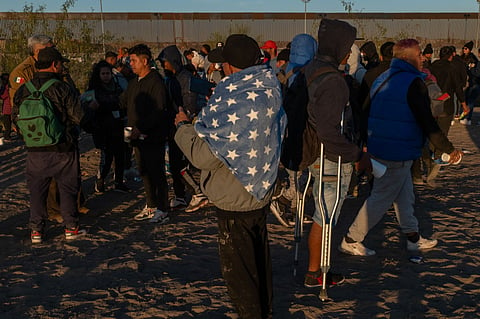Trump, Modi, and the 18,000 deportation deal
India agrees to take back its undocumented migrants in US, but real crisis runs deeper

The latest development regarding India and the United States relations involves the reported agreement to repatriate around 18,000 Indian nationals who are residing illegally in the US.
This initiative comes as part of an effort by the Indian government to cooperate with the Trump 2.0 administration, which has made a significant focus on cracking down on illegal immigration one of its key policies.
How big is the problem? Recent estimates have revealed a staggering figure: approximately 725,000 undocumented Indian immigrants currently reside in the United States, positioning them as the third-largest group of undocumented immigrants, following those from Mexico and El Salvador.
Some reports suggest this number might even be as high as a million. What is worse, this huge unauthorised exodus out of India has been largely underreported in both Indian and international media. Hardly anyone in India is talking about this even at this point.
But the question arises: why has such a large-scale migration gone unnoticed or, more disturbingly, unacknowledged by both domestic and international observers? The reasons are multifaceted, involving both systemic oversight and deliberate political manoeuvring.
The under-recognition of Indian outmigration cannot merely be attributed to the complexities of tracking undocumented immigrants. The clandestine nature of illegal migration means that these numbers are often estimates, based on border encounters, visa overstays, and community observations rather than precise counts.
Networks of human smugglers
Additionally, the Indian diaspora in the US, particularly from Gujarat, is often viewed through the lens of success stories and high achievers, which might eclipse the struggles of those without legal status. This positive portrayal can inadvertently mask the broader, more troubling narrative of undocumented migration.
The responsibility for this mass migration should be pinned on both the gangs and networks of human smugglers who charge huge sums of money to transport Indians into the US, often at great risk to their and their families’ lives. On one hand, the Modi government’s focus on economic development and international diplomacy has perhaps detracted from the urgency of addressing illegal emigration.
Gujarat, known for its entrepreneurial spirit, has seen significant economic growth; however, this has not been uniformly beneficial. The disparity in wealth, coupled with a lack of job opportunities that match the aspirations of its youth, has driven many to seek fortunes abroad, often through illegal channels.
The question of why the Modi government appeared to look the other way cannot be ignored. The recent meeting between India’s External Affairs Minister, Dr. S. Jaishankar, and US Secretary of State, Marco Rubio, brought about the reported agreement to repatriate about 18,500 undocumented Indian nationals.
This move, while commendable, only addresses a small fraction of the broader issue besides brining back only 10% of these illegal immigrants.
The repatriation, presumably at Indian expense, mirrors the government’s swift and commendable evacuation of Indians from Ukraine both during the Covid-19 pandemic and the war occasioned by the Russian invasion.
Widespread illegal migration
The Modi administration garnered significant public and international acclaim in these repatriations. However, while the government might seek to claim credit for such humanitarian efforts, it has largely avoided taking responsibility for the initial exodus and the conditions that led to such widespread illegal migration.
The government’s inability to take proactive measures or its failure to dismantle or even significantly disrupt the networks of human smugglers points to a systemic issue with governance and law enforcement. Why was this not a priority? Was there an underestimation of the scale or an overestimation of the benefits of having a large diaspora in a country like the US?
This situation underscores a broader theme of duplicity in India’s political rhetoric. The BJP government’s approach appears to celebrate the successful diaspora but sidesteps the plight of those who undertake perilous journeys for a chance at a better life. The repatriation of a few thousand is a drop in the ocean compared to the millions who have left or are at risk.
While the Indian government’s efforts to bring back a portion of its undocumented citizens reflect a response to the priorities of President Trump’s second term, it does not absolve them from the failures that led to this migration in the first place. There needs to be a more transparent, accountable, and proactive approach to address both the causes and consequences of illegal migration.
Without this, the narrative of government action will continue to be marred by accusations of doublespeak and selective responsibility, leaving many to question the integrity of governance in one of the world’s largest democracies.
Given the above facts, the brouhaha over H-1B visas, which is so over publicised, must be seen as a diversionary tactic.
Sign up for the Daily Briefing
Get the latest news and updates straight to your inbox



